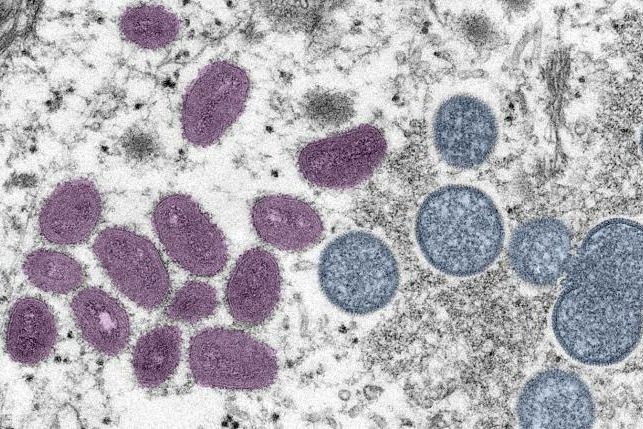RVC researchers identify gaps in actual disease burden highlighted by Monkeypox outbreak
A recent article by researchers from the Royal Veterinary College (RVC) and others published in the ‘International Journal of Infectious Diseases’ highlights the research gaps in the epidemiology of Monkeypox (MPX) virus in endemic countries. The article points to the recent increase of MPX cases in West Africa as a possible explanation for rising cases in the western world.

The researchers identified a lack of understanding of the true burden of MPX in West and Central Africa given its critical role in prevention and control of future outbreaks.
The team also commented on the diversity and extent of the animal reservoir. Despite increasing evidence of acute or prior infection, MPX has been isolated from wild animals on only two occasions: once from a rope squirrel and once from a sooty mangabey monkey suggesting there is still much to understand regarding reservoirs and potential spill over.
The article follows a recent rise in cases of Monkeypox throughout the western world including more than 100 cases in the UK, with conversations emerging the threat the disease could pose and whether it’s likely to become endemic in Europe.
There are several hypotheses proposed within the article relating to the current epidemic in Europe including increased interactions between human and rodent populations in urban areas. Cases in Europe could be linked to increased local transmission in Sub-Saharan Africa which has increased the export of the virus to non-endemic areas. The termination of routine smallpox vaccinations in human populations almost 45 years ago may also have contributed to the increase in human-to-human transmission with a larger and more interconnected naïve population.
Furthermore, the unusually high frequency of human-to-human transmission observed in young European clusters, and the probable community transmission without any history of traveling to endemic areas raise the possibility of sustained human-to-human transmission among certain risk groups.
As a result of recent events, the team is calling for national and international collaboration to address the research gaps related to MPX outbreaks and enable countries to prevent the spread of the disease.
Dr Najmul Haider, Post-doctoral researcher, veterinarian and epidemiologist and at the RVC said:
“More than 50 years have passed since the first case of Monkeypox was recorded but very little research has been undertaken on this neglected tropical pathogen. The epidemic of Monkeypox reminds us of the importance of tackling diseases at their source of origin, through a coordinated One Health approach, or risk the disease spreading and evolving further, with significant consequences.”
Reference
Haider et al. (2022) “Increased outbreaks of monkeypox highlight gaps in actual disease burden in Sub-Saharan Africa and in animal reservoirs”, International Journal of Infectious Diseases
The full article is available and can be accessed here: https://www.ijidonline.com/article/S1201-9712(22)00322-8/fulltext
DOI: 10.1016/j.ijid.2022.05.058
About the RVC
- The Royal Veterinary College (RVC) is the UK's largest and longest established independent veterinary school and is a Member Institution of the University of London.
- It is one of the few veterinary schools in the world that hold accreditations from the RCVS in the UK (with reciprocal recognition from the AVBC for Australasia, the VCI for Ireland and the SAVC for South Africa), the EAEVE in the EU, and the AVMA in the USA and Canada.
- The RVC is ranked as the top veterinary school in the world in line QS World University Rankings by subject, 2022.
- The RVC offers undergraduate and postgraduate programmes in veterinary medicine, veterinary nursing and biological sciences.
- A research led institution with 88% of its research rated as internationally excellent or world class in the Research Excellence Framework 2021.
- The RVC provides animal owners and the veterinary profession with access to expert veterinary care and advice through its teaching hospitals and first opinion practices in London and Hertfordshire.
